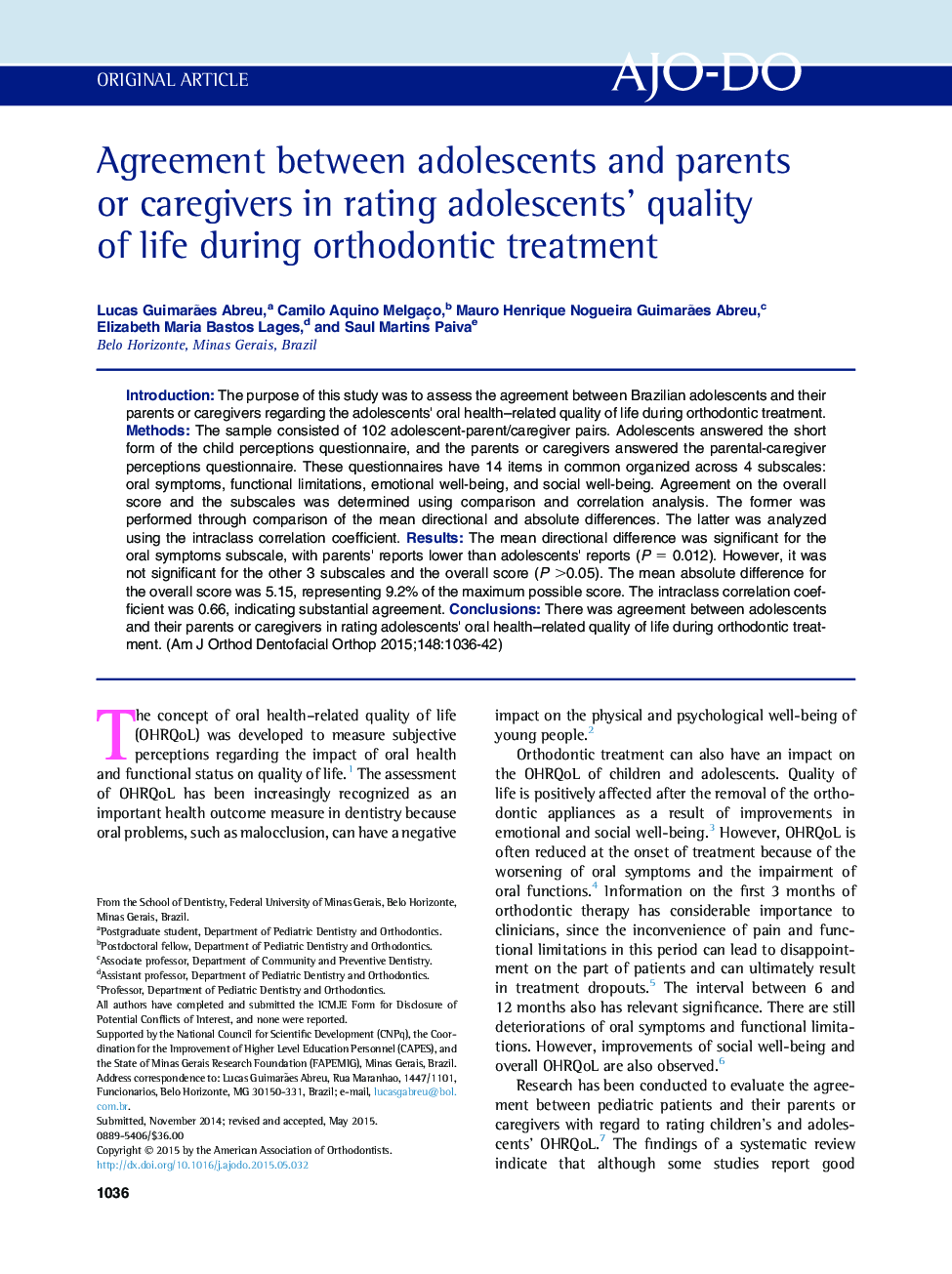| Article ID | Journal | Published Year | Pages | File Type |
|---|---|---|---|---|
| 3115271 | American Journal of Orthodontics and Dentofacial Orthopedics | 2015 | 7 Pages |
•Orthodontic patients and parents showed good agreement in rating quality of life.•This information could be useful for orthodontists in clinical practice.•Quality of life research can be used to guide oral health public policies.
IntroductionThe purpose of this study was to assess the agreement between Brazilian adolescents and their parents or caregivers regarding the adolescents' oral health–related quality of life during orthodontic treatment.MethodsThe sample consisted of 102 adolescent-parent/caregiver pairs. Adolescents answered the short form of the child perceptions questionnaire, and the parents or caregivers answered the parental-caregiver perceptions questionnaire. These questionnaires have 14 items in common organized across 4 subscales: oral symptoms, functional limitations, emotional well-being, and social well-being. Agreement on the overall score and the subscales was determined using comparison and correlation analysis. The former was performed through comparison of the mean directional and absolute differences. The latter was analyzed using the intraclass correlation coefficient.ResultsThe mean directional difference was significant for the oral symptoms subscale, with parents' reports lower than adolescents' reports (P = 0.012). However, it was not significant for the other 3 subscales and the overall score (P >0.05). The mean absolute difference for the overall score was 5.15, representing 9.2% of the maximum possible score. The intraclass correlation coefficient was 0.66, indicating substantial agreement.ConclusionsThere was agreement between adolescents and their parents or caregivers in rating adolescents' oral health–related quality of life during orthodontic treatment.
